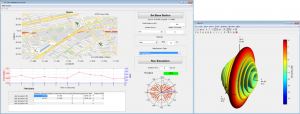5G Wireless Technology Development : Using MATLAB and Simulink to Design, Test, and Prototype 5G Wireless Systems
5G wireless technology is a highly active area of research and development. 5G will enable gigabit data rates, ubiquitous coverage, ultra-low latency, and massive connectivity for machine-to-machine (M2M), connected vehicles, and Internet of Things (IoT) applications. To accomplish these ambitious goals, 5G developers need to overcome a number of challenges, such as :
- Designing beamforming and precoding algorithms for antenna arrays and massive MIMO systems
- Assessing the changes needed in RF system architectures to achieve higher data rates by using mmWave frequencies
- Building accurate channel models from real-world measurement data for frequencies >6Ghz
- Evaluating the performance characteristics of new modulation schemes
- Creating a hardware testbed to verify designs with live radio signals in realistic scenarios
These challenges span the traditional disciplines of baseband communications, RF systems, and hardware design. The multi-faceted nature of 5G research requires an integrated workflow consisting of :
- A unified simulation environment that enables researchers to develop, test, and analyze new 5G algorithms together with relevant RF, antenna, and channel effects
- Rapid prototyping and deployment of new algorithms to a suitable real-time 5G testbed for testing and evaluation, using commercial SDR platforms or your own custom FPGA hardware
To learn about tools that provide an integrated development environment for 5G wireless technology, see MATLAB, Simulink, Antenna Toolbox, Communications System Toolbox, LTE System Toolbox, Phased Array System Toolbox, and SimRF.
Base Station is modeled with different types of antenna arrays, with a direction-finding and beamforming algorithm to direct the main lobe toward the desired UE location to maximize SNR (left). Antenna array pattern used in the simulation is visualized (right). Contains information from Omniscale Openstreetmap WMS, which is made available here under the Open Database License (ODbL).





